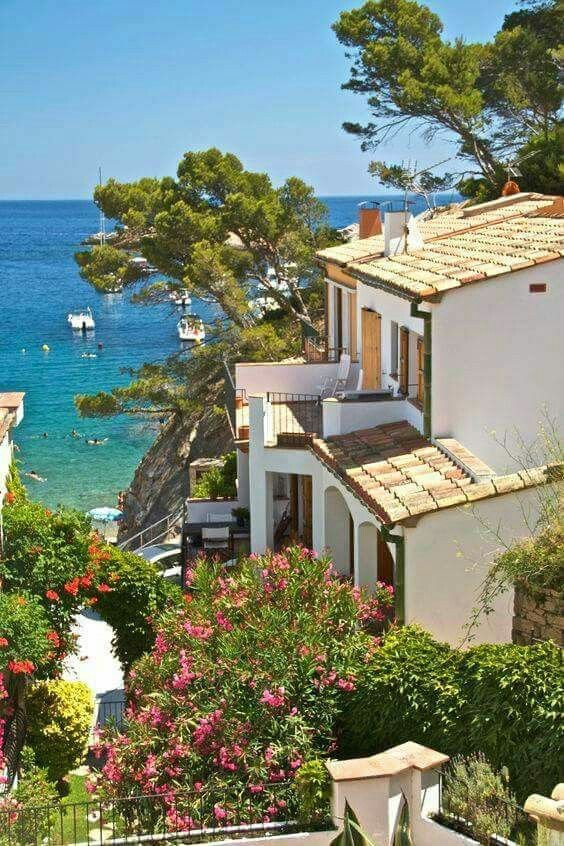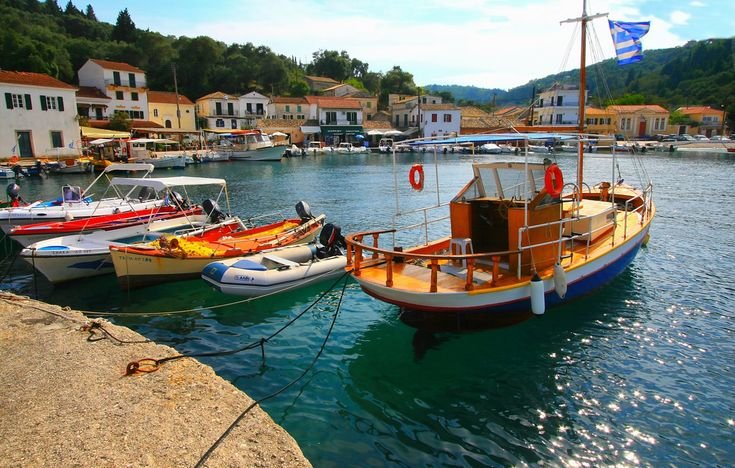Welcome to the ultimate Island Hopping Guide: How to Get to Paxos Island and Beyond – your comprehensive companion for navigating the jewels of the Ionian Sea. Nestled in the crystalline waters of the Ionian archipelago, Paxos Island stands as a testament to Greece’s breathtaking natural beauty, yet remains wonderfully unspoiled by mass tourism. This emerald jewel, located just 10 kilometers south of Corfu, offers the perfect combination of authentic Greek charm, stunning seascapes, and accessibility that makes it an ideal cornerstone for any island hopping adventure. Unlike its more famous counterparts in the Cyclades or Dodecanese, Paxos delivers a more intimate Greek island experience – where olive grove-covered hillsides cascade down to secluded pebble beaches, and clear turquoise waters invite you to explore hidden sea caves and dramatic cliffs. As you embark on your journey to discover Paxos and beyond, you’ll find yourself navigating a sailor’s paradise where island hopping isn’t just a mode of travel but an unforgettable adventure in itself.
- The perfect balance of accessibility and seclusion makes Paxos an excellent starting point or centerpiece for your Greek island hopping adventure, offering the authentic charm that many travelers seek without the overwhelming crowds that sometimes dominate more famous Greek destinations during peak season.
- At just 10 square kilometers, Paxos may be small in size but delivers an impressive diversity of experiences – from the elegant Venetian architecture of Gaios (the main harbor) to the peaceful olive groves that have been cultivated for centuries, creating a landscape that feels both cultured and gloriously wild.
- Legend has it that Paxos was created when Poseidon struck Corfu with his trident to create a peaceful retreat for himself and his wife Amphitrite – and indeed, the island maintains that sense of being a divine sanctuary where time moves more slowly and the natural beauty remains unspoiled.
- The strategic location of Paxos makes it an ideal hub for exploring the Ionian archipelago, with easy connections to Corfu, Lefkada, Kefalonia, and numerous smaller islands that offer their own unique character and charm for the curious traveler.
The Ideal Time to Experience Paxos and the Ionian Islands
The rhythm of life on Paxos and its neighboring islands pulses with the changing seasons, each offering a distinctly different experience for island hoppers. The Mediterranean climate blesses these shores with long, sun-drenched summers and mild winters, but savvy travelers know that timing is everything when planning the perfect Greek island adventure. While the islands are most alive during the vibrant summer months, the shoulder seasons offer a special magic – when the crowds thin out but the sea remains invitingly warm, and local life returns to its authentic pace.
- Late spring (May to early June) presents perhaps the most balanced time to visit Paxos and embark on island hopping adventures, with comfortable temperatures averaging 23-27°C (73-80°F), gloriously blooming wildflowers carpeting the hillsides, and crystal-clear waters perfect for swimming, yet without the intense heat or crowds of high summer.
- Peak summer (July and August) delivers the quintessential Greek island experience with reliable sunshine and vibrant energy as tavernas, beaches, and harbors come alive with visitors and locals alike, though ferry schedules are at their most frequent during this time – making summer ideal for ambitious island hoppers despite accommodation prices being at their premium.
- Early autumn (September to mid-October) offers perhaps the insiders’ choice for island hopping around Paxos, when the sea retains its summer warmth, summer crowds have dispersed, prices begin to drop, yet most restaurants and services remain open – creating an atmosphere of tranquility perfect for those seeking to experience the islands’ authentic character.
- Winter visits (November through March) present a completely different but equally authentic face of the islands, where ferry connections become less frequent and some businesses close, yet the landscape transforms with lush green vegetation following the winter rains, olive harvesting activities begin, and you’ll experience the islands as locals do – though be prepared for limited services and the possibility of ferry cancellations due to weather.
Navigating Your Way to Paxos: Transportation Options
Reaching this Ionian treasure requires a bit more effort than some of Greece’s more accessible islands, but this extra step in your journey is precisely what preserves Paxos’s unspoiled charm and authentic character. With no airport on the island itself, your path to paradise involves a delightful combination of air travel and sea passages that gradually transition you from the hurried pace of everyday life to the tranquil rhythm of island time. Each transportation option offers its own unique perspective on approaching this emerald isle, from economical public ferries to stylish private boat transfers.
- The most common route begins with a flight to Corfu International Airport (CFU), which receives direct flights from many European cities during summer months and year-round connections via Athens, after which you’ll transfer to the port of Corfu Town to catch a ferry or hydrofoil to Paxos – a journey that typically takes between 1-2 hours depending on the vessel and weather conditions.
- Regular ferry services connect Corfu to Paxos year-round, with larger conventional ferries operated by Kamelia Lines making the crossing in about 90 minutes to Gaios harbor, while faster hydrofoils and sea taxis can reduce transit time to approximately 30-45 minutes but may be more susceptible to cancellation in rough seas.
- For those traveling from Italy, direct ferries operate from Bari and Brindisi to Corfu, making it possible to combine an Italian holiday with your Greek island adventure without returning to the mainland, though these international ferry routes operate primarily during the high season from May to October.
- Alternative approaches include sailing from the mainland Greek ports of Igoumenitsa or Parga to Paxos (approximately 2-3 hours), which can be particularly convenient for travelers doing a road trip through mainland Greece or arriving via the international airport at Preveza (PVK) which serves Lefkada island and is approximately 100km from Igoumenitsa.

Island Connections: Hopping From Paxos to Other Ionian Gems
Once you’ve anchored yourself in Paxos, a constellation of island experiences awaits within easy reach, each offering distinct landscapes, cultures, and attractions that create a rich tapestry of Ionian life. From your Paxos base, you can design an island hopping itinerary as relaxed or ambitious as your heart desires, with options ranging from quick day trips to extended multi-island explorations. The frequency of connections varies seasonally, but the rewarding diversity of experiences ensures that each new harbor brings fresh discoveries.
- The diminutive sister island of Antipaxos lies just 3 kilometers south of Paxos and deserves top billing on any island hopping itinerary, with daily boat services making the 15-minute crossing to this tiny paradise where two of Greece’s most beautiful beaches – Voutoumi and Vrika – showcase sand so white and waters so stunningly blue that they rival any Caribbean destination.
- Corfu, the grand dame of the Ionian islands, offers a perfect contrast to Paxos’s tranquility with its UNESCO-listed Old Town, impressive Venetian fortresses, and cosmopolitan atmosphere, easily accessible via daily ferries and hydrofoils that take 1-2 hours depending on the service, making it ideal for either day trips or as your next multi-day destination.
- Lefkada presents another compelling island hopping opportunity with its dramatic west coast beaches (including the world-famous Porto Katsiki), windsurfing havens, and the advantage of being connected to mainland Greece by a causeway, though reaching it from Paxos typically requires either a ferry connection via Corfu or a private boat charter for the direct 3-4 hour journey.
- For more ambitious island hoppers, the larger islands of Kefalonia and Ithaca lie further south, offering mythological connections (Ithaca was the home of Odysseus) and diverse landscapes from mountains to beaches, accessible via ferry combinations or private charters that could form part of a more extended Ionian exploration, particularly during the summer months when connections are most frequent.
Unmissable Experiences: Paxos Island’s Hidden Treasures
Beyond its role as a gateway to the Ionian archipelago, Paxos itself deserves unhurried exploration, revealing layers of natural beauty, cultural heritage, and simple pleasures that embody the authentic Greek island experience. Despite its modest size, the island packs remarkable diversity into its olive-covered landscape – from the three characterful harbor towns each with distinct personalities to the dramatic west coast where towering cliffs plunge into electric-blue waters. Every corner of the island tells a story of its maritime history and agricultural traditions, inviting visitors to slow down and savor experiences that engage all the senses.
Charming Harbor Towns
- Exploring the photogenic harbors of Gaios, Lakka, and Loggos reveals three different faces of island life – from the relative cosmopolitan buzz of Gaios with its Venetian square and fashionable boutiques, to the perfect horseshoe bay of Lakka with excellent swimming, to the tiny fishing village charm of Loggos where time seems to have stopped as fishing boats bob alongside traditional tavernas serving the day’s catch.
Dramatic Coastlines
- The spectacular west coast of Paxos offers some of the Mediterranean’s most dramatic scenery, best explored by boat to discover the famous Ortholithos (Needle) rock formation, mysterious blue caves where sunlight creates magical light effects, and the imposing white cliffs that plunge directly into waters so clear you can count the pebbles 30 meters below the surface.
Ancient Pathways
- Hiking ancient donkey paths that crisscross the island through centuries-old olive groves (some trees dating back 400 years) offers intimate connection with the island’s agricultural heritage and breathtaking viewpoints such as the Tripitos Arch – a natural stone formation that frames perfect photos of the Ionian Sea stretching to the horizon.
Secluded Beaches
- Discovering secluded beaches far from the summer crowds provides the ultimate Paxos pleasure, with gems like pebbly Kipiadi beach accessible only by boat or a challenging walk, Monodendri beach with its excellent beach bar and water sports facilities, or the tucked-away Glyfada beach where crystal waters meet smooth white pebbles beneath the shade of natural rock formations.
Beyond Paxos: Must-Visit Neighboring Islands
The true magic of basing your island hopping adventure around Paxos lies in the remarkable diversity of experiences waiting just a short boat ride away. Each neighboring island offers a distinctly different flavor of Ionian life, from tiny uninhabited islets where you can be the only visitors, to larger islands with rich cultural heritages spanning thousands of years of Mediterranean history. By strategically planning your island connections, you can create a tapestry of experiences that showcase both the unifying elements of Ionian culture and the unique character that makes each island special.
Antipaxos: A Tiny Paradise
- Antipaxos may be tiny (just 5 square kilometers) and have fewer than 100 permanent residents, but it delivers outsized beauty with its perfect beaches, walking trails through vineyards that produce the island’s famous robust red wine, and opportunities for complete solitude in pristine natural surroundings just a short boat ride from Paxos.
Corfu: Cultural Richness
- Corfu offers an entirely different scale of island experience with its rich multicultural heritage visible in Italian-influenced architecture, British legacies like cricket grounds and ginger beer, and authentically Greek mountain villages – all complemented by over 200 kilometers of coastline ranging from developed resort areas to completely undiscovered coves.
Lesser-Known Gems
- The lesser-known islands of Paxoi (Paxi), including Kalamos, Kastos, and Meganisi near Lefkada, provide off-the-beaten-path alternatives for island hoppers seeking authentic Greek island life largely untouched by tourism, where you’ll find simple tavernas serving grandmothers’ recipes, tiny harbors where fishing remains the primary occupation, and beaches where your footprints might be the first of the day.
- For history enthusiasts, incorporating larger islands like Ithaca (with its connections to Homer’s Odyssey) or Lefkada (rumored to be the place where poet Sappho leapt to her death) adds layers of mythology and ancient heritage to your island hopping adventure, with archaeological sites, museums, and living cultural traditions that connect modern visitors to thousands of years of Mediterranean civilization.

Historical Islands
Where to Stay: Accommodation Options in Paxos
Paxos offers a refreshingly authentic range of accommodation options that reflect the island’s character – focused on quality experiences rather than mass tourism infrastructure. From traditional stone houses tucked among olive groves to elegant waterfront villas with stunning sea views, the island caters to different preferences while maintaining an intimate scale that never feels overcrowded or overdeveloped. Most properties are locally owned and operated, adding a personal touch to your stay that enhances the sense of connecting with the island’s genuine character and traditions.
- Traditional stone villas converted with modern comforts represent the quintessential Paxos accommodation experience, often featuring private pools, garden terraces shaded by olive trees, and interiors that blend rustic elements like exposed stone walls with contemporary amenities – many available through local agencies like Paxos Magic or international platforms specializing in character properties.
- Waterfront apartments and small boutique hotels in the three main harbor towns (Gaios, Lakka, and Loggos) offer the convenience of being steps away from tavernas, shops, and boat connections, with balconies that deliver mesmerizing harbor views where you can watch fishing boats return with the day’s catch as the sun sets over the Ionian Sea.
- Budget-conscious travelers can find excellent value in family-run guesthouses and simple studio apartments typically arranged around fragrant garden courtyards filled with bougainvillea and lemon trees, particularly in the villages slightly inland from the coast like Magazia and Fountana, where prices are lower but you’re still within 15-20 minutes’ walk of beaches and amenities.
- For those seeking absolute privacy or traveling with extended family or friends, entire houses can be rented in secluded locations around the island, some accessible only by boat or rural tracks, offering complete immersion in Paxos’s natural beauty with private beach access, infinity pools overlooking the sea, and outdoor kitchen areas perfect for long dinners under the stars using local ingredients.
Savoring the Flavors: Culinary Delights of Paxos and the Ionian Islands
The culinary traditions of Paxos and the Ionian islands offer a distinctive variation on Greek cuisine, influenced by centuries of Venetian rule and blessed with exceptional local produce from both land and sea. Olive oil forms the cornerstone of the island’s gastronomy, produced from trees that have grown here for centuries and prized for its exceptionally low acidity and smooth, fruity flavor. As you island hop through the region, you’ll discover subtle variations in recipes and techniques that reflect each island’s unique history and produce, creating a fascinating gastronomic journey alongside your geographical explorations.
- The extraordinary quality of Paxos olive oil deserves special recognition, produced from trees planted during Venetian rule in the 16th century and still harvested using traditional methods, creating an exquisite foundation for local specialties like savoro (fish marinated with rosemary, vinegar, and raisins) and tsigareli (wild greens slowly cooked with olive oil, garlic, and hot peppers).
- Seafood naturally dominates menus throughout the Ionian islands, with each taverna having specialties based on the daily catch – from grilled octopus drizzled with local olive oil and lemon at waterfront tables in Loggos, to bianco (fish cooked in a white wine, garlic, and lemon sauce) at family-run establishments in Lakka, to lobster spaghetti that represents the ultimate special-occasion dish in upscale harbor restaurants.
- Distinctive Ionian specialties that differ from mainland Greek cuisine include sofrito (sliced veal cooked with vinegar, garlic and herbs) and pastitsada (rooster or beef pasta in a rich spiced tomato sauce) which show clear Venetian influences, bourdeto (fish cooked in a spicy red sauce) reflecting local preference for heat, and unusual sweet combinations like kumquat liqueur from Corfu or mandolato (a chewy nougat with honey and almonds).
- Beyond restaurants, culinary explorers should seek out local food producers like the traditional olive press museum in Magazia village where you can sample oils of different ages, small family wineries producing robust red wines from Antipaxos grapes, and village bakeries creating sweet specialties like rozolia (semolina cake soaked in syrup) and honey-drenched baklava perfect for enjoying with a strong Greek coffee while watching harbor life unfold.
Practical Tips for Island Hopping Success in the Ionian
Navigating the logistics of Greek island hopping requires a blend of careful planning and flexible adaptation, especially in the Ionian Sea where weather conditions and seasonal variations can significantly impact travel connections. While the experience delivers incomparable rewards, being prepared with practical knowledge enhances your journey and helps avoid common pitfalls that might disrupt your island hopping rhythm. From transportation schedules to packing considerations, these insider tips will help ensure your Ionian adventure flows as smoothly as the azure waters surrounding these captivating islands.
- Ferry schedules in the Ionian change seasonally with dramatically reduced service during winter months (November-April), so always verify current timetables through official websites like Kamelia Lines for Paxos-Corfu routes or through the comprehensive Greek travel portal Ferryhopper, which allows booking of multiple island connections in a single transaction.
- Weather considerations should inform your island hopping plans, as the Ionian Sea can experience strong winds (particularly in late afternoon) that occasionally cause cancellations of smaller vessel services – building buffer days into your itinerary and maintaining flexible accommodation plans can prevent disappointment, while morning departures generally offer calmer sea conditions.
- Practical packing for Ionian island hopping should include essentials often overlooked: sea sickness remedies even for those who don’t usually need them (the crossing between Paxos and Antipaxos can be surprisingly choppy), water shoes for the predominantly pebbly beaches, a dry bag for protecting electronics during boat transfers, and cash reserves as ATMs are limited on Paxos and non-existent on smaller islands like Antipaxos.
- Transportation on Paxos itself requires planning, with options including rental cars from agencies in Gaios (book well ahead in high season), motor scooters (requires appropriate license), island buses connecting major villages (infrequent but affordable), and water taxis between coastal points that offer a scenic alternative to road travel and can be arranged through your accommodation or at harbor offices in Gaios, Lakka, and Loggos.
Crafting Your Perfect Ionian Island Hopping Adventure
The waters surrounding Paxos have welcomed explorers, traders, and travelers for millennia, each finding their own unique connection to these timeless islands. Your journey through the Ionian archipelago continues this ancient tradition of discovery, where each island reveals new landscapes, flavors, and stories waiting to be experienced. Whether you choose a focused exploration centered around Paxos and its immediate neighbors, or embark on a more ambitious voyage through the wider Ionian chain, the rhythmic transition between islands creates a natural cadence that defines the true essence of Greek island hopping – where the journey between destinations becomes as meaningful as the destinations themselves. This Island Hopping Guide: How to Get to Paxos Island and Beyond aims to inspire your own unforgettable adventure through these magnificent Ionian waters.
- Consider structuring your island hopping adventure as a series of concentric circles radiating from your Paxos base – perhaps beginning with day trips to Antipaxos and boat tours of Paxos’s coastline, then expanding to overnight stays in Corfu or Lefkada, and potentially extending to more distant islands like Kefalonia or Ithaca if time permits.
- Balance planned activities with unscheduled time that allows for spontaneous discoveries – perhaps the invitation from a local fisherman to join his morning expedition, the recommendation from a taverna owner about a hidden beach accessible only at low tide, or the unexpected festival in a mountain village that delivers the kind of authentic experiences that become your most treasured memories.
- Capture the essence of your island hopping adventure beyond photographs by creating sensory connections you can revisit later – perhaps a bottle of Paxos olive oil, a bouquet of dried herbs gathered from hillside walks, or a handcrafted ceramic from a small island workshop – physical remembrances that evoke the sounds, scents, and feelings of your Ionian exploration.
- Remember that the true magic of Greek island hopping lies in the contrasts and connections you discover – between developed and untouched islands, between tourist facilities and authentic local life, between active exploration and peaceful relaxation – and the Ionian islands surrounding Paxos offer perhaps the perfect canvas for creating this balanced, multifaceted Greek island experience that will call you back again and again.





